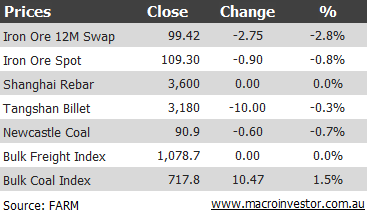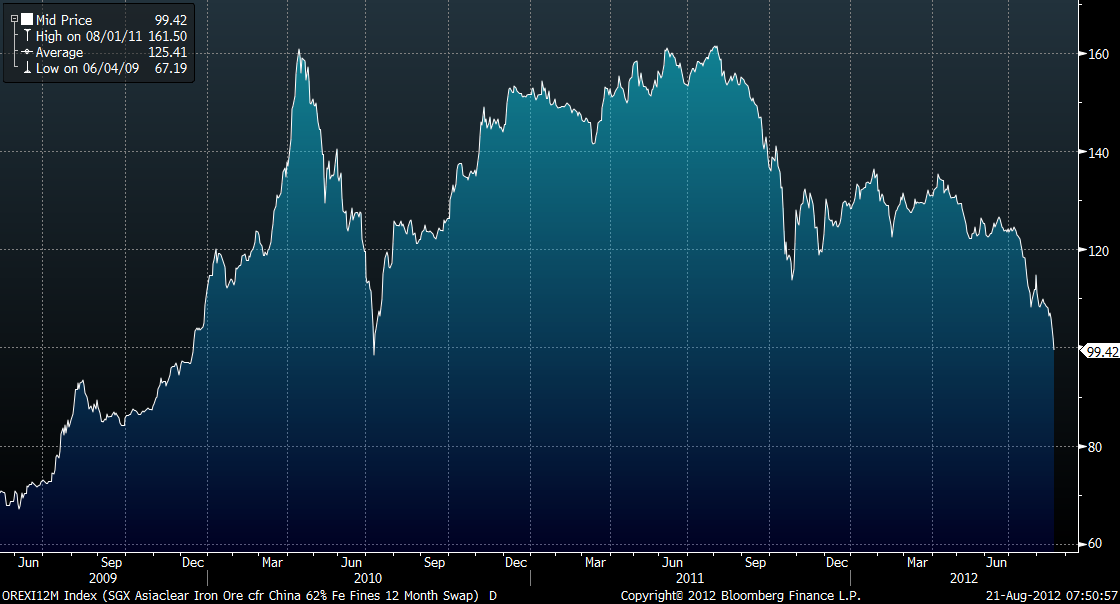Iron ore weakness continued yesterday:

12m swaps busted the ton. Here’s a long term chart:

Sorry to harp on this, but swaps are rapidly approaching the 2010 low of $98.50 that marks the neckline on the giant post-GFC head and shoulders pattern.
The news from China was also poor. From Reuters:
An unexpected rebound in steel output in top steel-producer China may curb any future gains as it could exacerbate a recent supply glut and high inventories, analysts said. “Market fundamentals remain poor and rising output in early August further dampened sentiment,” said Ding Rui, an analyst at Shanghai Zhongcai Futures. “I expect a weak rise in steel prices as they have largely fallen below production costs, while I don’t see any big improvement in steel demand ahead.” Some traders said they were making a loss of about 300 yuan per tonne based on current prices. China’s daily crude steel output rose 1.1 percent to 1.970 million tonnes over Aug. 1-10 from July 21-31, belying expectations for a modest fall, as many steel mills resumed running after a round of brief maintenance in mid-July.
I’m not sure why everyone is so keen to see production cuts in China. Sure, it’ll boost steel prices but unless there are corresponding ore production cuts then it does nothing to prevent further falls in ore prices.
I am beginning to worry that we are confronting a paradigm shift in ore demand.

